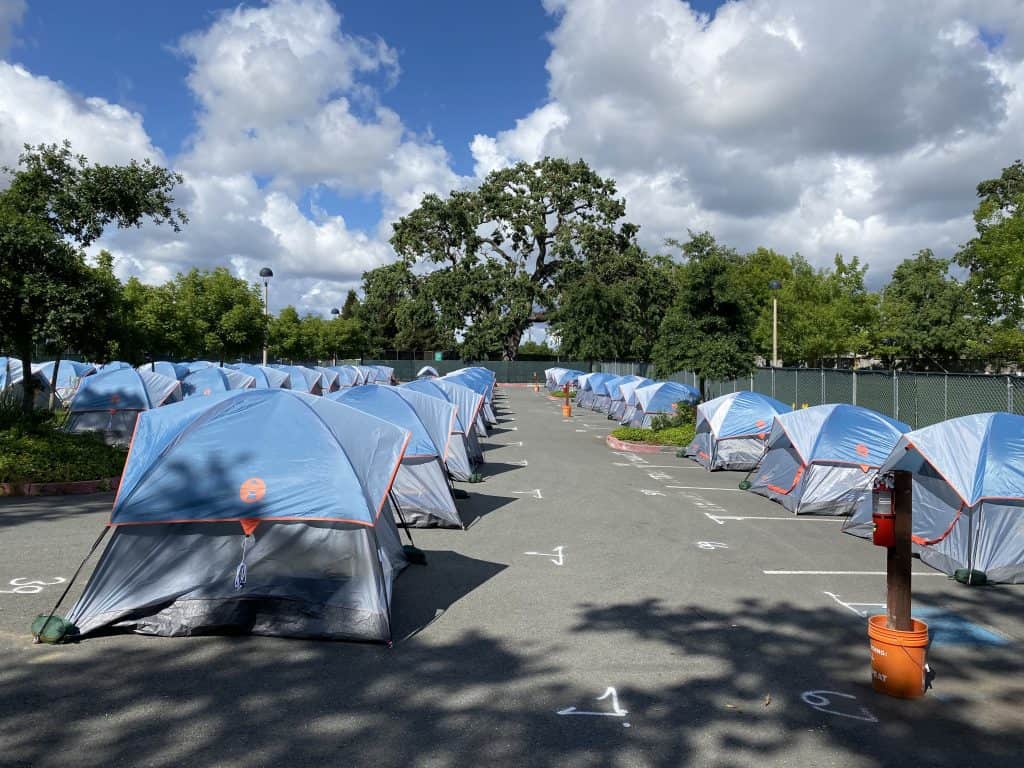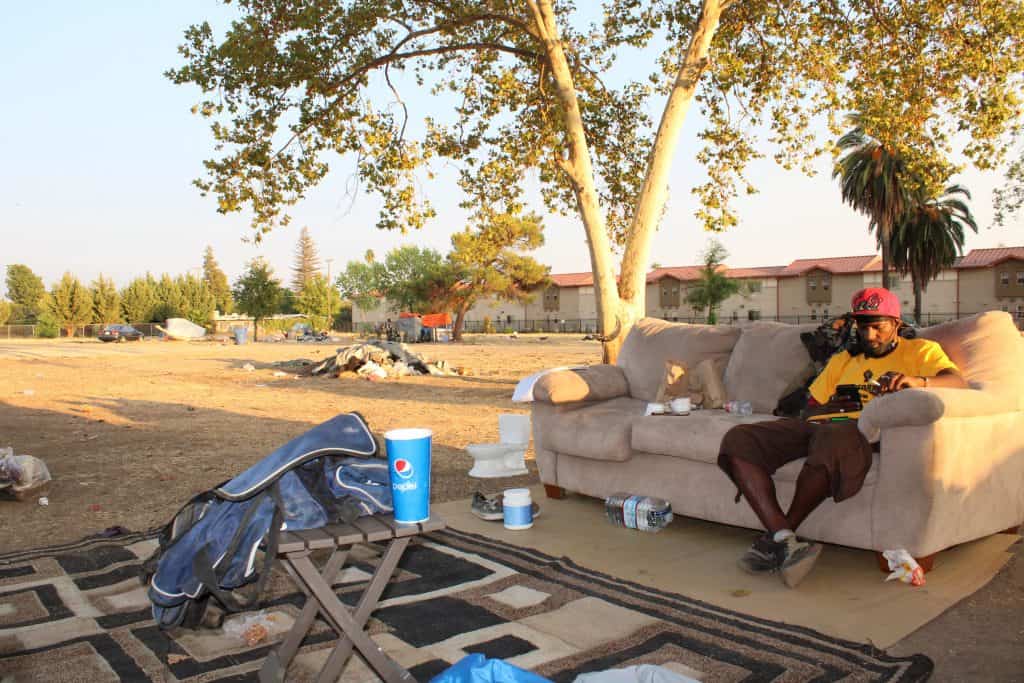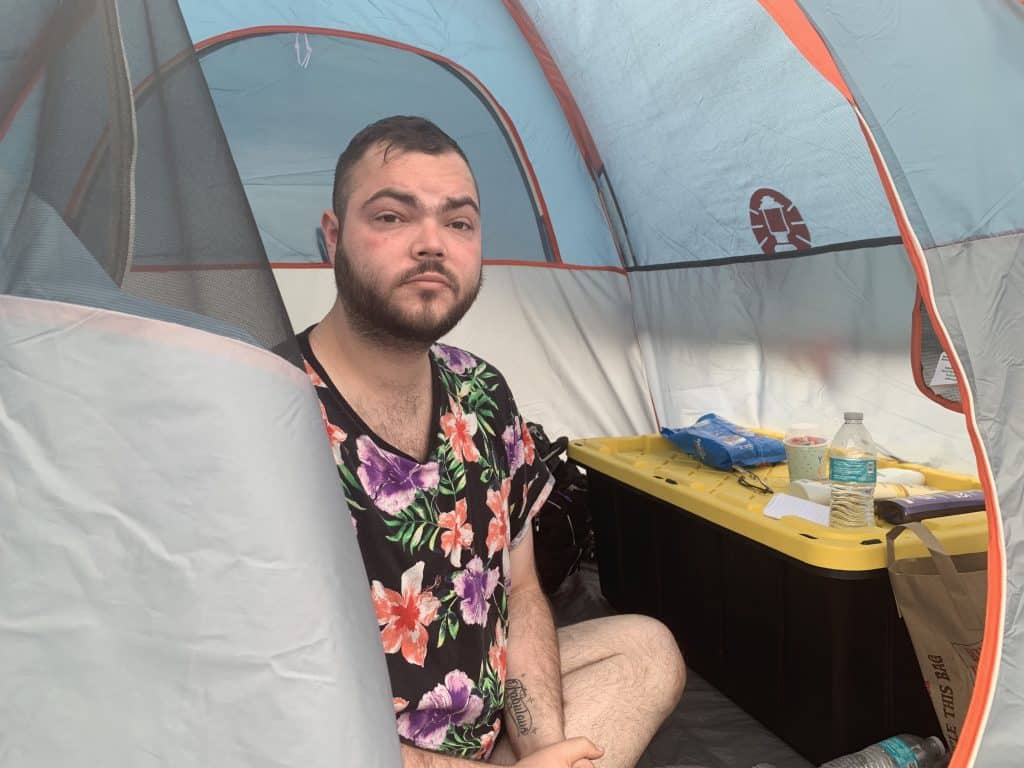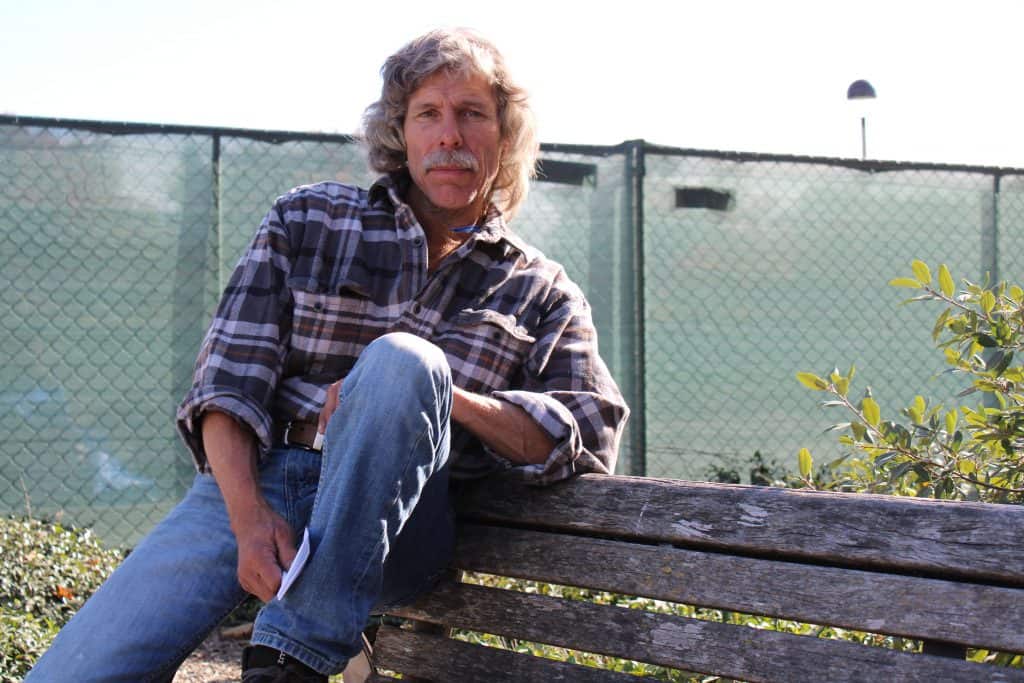It was early May, and officials in this Northern California city known for its farm-to-table dining culture and pumped-up housing prices were frantically debating how to keep Covid-19 from infiltrating the homeless camps proliferating in the region’s celebrated parks and trails. For years, the number of people living homeless in Santa Rosa and the verdant hills and valleys of broader Sonoma County had crept downward — and then surged, exacerbated by three punishing wildfire seasons that destroyed thousands of homes in four years.
Seemingly overnight, the city’s homeless crisis had burst into view. And with the onset of Covid, it posed a devastating health threat to the hundreds of people living in shelters, tents and makeshift shanties, as well as the service providers and emergency responders trying to help them.
In the preceding weeks, as Covid made its first advance through California, Governor Gavin Newsom had called on cities and counties to persuade hotel operators to open their doors to people living on the streets whose age and health made them vulnerable. But in Santa Rosa, a town that thrives on tourist dollars, city leaders knew they would never find enough owners to volunteer their establishments.
City Council member Tom Schwedhelm, then serving as mayor, settled on an idea to pitch dozens of tents in the parking lot of a gleaming community center in an affluent neighborhood known as Finley Park, a couple of miles west of Santa Rosa’s central business district.
Neighborhood residents weren’t keen on the idea of accepting homeless people into their enclave of tree-lined streets and sleepy cul-de-sacs. Yet in short order, thousands of residents and businesses received letters notifying them of the city’s plans to erect 70 tents that could shelter as many as 140 people at the Finley Community Center, a neighborhood jewel that draws scores of families and fitness enthusiasts to its manicured picnic grounds, sparkling pool and tennis courts.

The backlash was fierce. For three hours on a Thursday evening in mid-May, Santa Rosa officials defended their plans as hundreds of residents flooded the phone lines to register their discontent.
“Will there be a list of everybody who decided to do this to us and our park, in case we want to vote them out?” one resident barked.
“This is a family neighborhood,” another fumed.
“How can we feel safe using our park?” others pleaded.
In Santa Rosa, like so many other communities, strenuous neighborhood objections typically would drive a stake through a proposal for homeless housing and services. Not this time. Elected officials were not asking; they were telling. The project would move ahead.
“Go ahead and vote me out,” says Schwedhelm, recounting his mindset at the time. “You want to shout at me and get angry? Go ahead. It’s important for government to listen, but the reality is these are our neighbors, so let’s help them.”
Within days, the spacious parking lot at the Finley Community Center was cordoned off with green mesh fencing. Inside, spaced 12 feet apart, were 68 blue tents, each equipped with sleeping bags and storage bins. A neat row of portable toilets lined one side of the encampment, and it was fitted throughout with hand-washing stations and misters for the summer heat.
The city contracted with Catholic Charities of Santa Rosa to manage the camp, and social workers fanned out to the city shelters and unsanctioned encampments, where they found dozens of takers. The first dozen residents were in their tents four days after the site was approved, and the population quickly swelled to nearly 70. In exchange for shelter, showers and three daily meals, camp residents agreed to an 8 p.m. curfew and a contract pledging to honor mask and physical-distancing requirements and act as good neighbors.
Crushed by negative news?
Sign up for the Reasons to be Cheerful newsletter.Santa Rosa’s tent city opened May 18. And, not too long after, something remarkable happened. Finley Park residents stopped protesting and started dropping off donations of goods — food, clothing, hand sanitizer. The tennis and pickleball courts, an afternoon favorite for retirees, were bustling again. Parents and kids once more crowded the nearby playground.
And inside that towering green perimeter, people started getting their lives together.
From May to late November, Santa Rosa would spend $680,000 to supply and manage the site, a six-month experiment that would chart a new course for the city’s approach to homeless services. As cities across California wrestle with a crisis of homelessness that has drawn international condemnation, the Santa Rosa experience suggests a way forward. Rather than engage in months of paralyzing discussion with neighborhood opponents before committing to a housing or shelter project, city officials decided their role was to lead and inform. They would identify project sites and drive forward, using neighborhood feedback to tailor improvements to a plan — but not to kill it.
It was a watershed moment of action that would echo across Sonoma County.
“We know we’re pissing off a lot of people — they’re rising up and saying, ‘Hell, no!’” says county Supervisor James Gore, president of the California State Association of Counties. “But we can’t just keep saying no. That’s been the failed housing policy of the last 30 to 40 years. Everybody wants a solution, but they don’t want to see that solution in their neighborhoods.”
‘Death by a Thousand Cuts’
About a quarter of the nation’s homeless reside in California, nearly 160,000 people living in cars, on borrowed couches, in temporary shelters or on the streets. The pandemic has exacerbated the crisis for a host of reasons, including Covid-related job loss and prison releases and new capacity limits at homeless shelters.
From Los Angeles and Fresno to San Francisco and Sacramento, homeless encampments have multiplied. And without toilets or trash bins, unsanctioned encampments have become magnets for neighborhood complaints about seedy, unsanitary conditions. That leads to regular law enforcement sweeps that raze an encampment only to see it rise elsewhere.

California’s capital city offers a telling example of the dynamic. An estimated 6,000 people are living homeless in Sacramento, a population that has grown more visible since Covid brought office life to a standstill. Tents and tarps crowd freeway underpasses throughout the downtown grid, accompanied by wafting piles of trash and clutter.
The mayor, Darrell Steinberg, is known as a champion on homelessness issues. During his years in the state legislature, he pushed through measures that exponentially increased funding to address homelessness and mental illness. But in more than four years as mayor he has struggled to muscle through a cohesive policy for moving people off the streets and into supportive housing.
“The problem with our approach,” Steinberg said earlier this year, “is that every time we seek to build a project, there is a neighborhood controversy. Our own constituents say, ‘Solve it, but please don’t solve it here,’ and we end up experiencing death by a thousand cuts.”
With community uproar building, he is leading the charge on a new initiative to build a continuum of city-sanctioned housing, including triage shelters, sanctioned campgrounds and permanent housing with social services. The city has allocated up to $1 million in an initial outlay for tiny homes and safe camping, but as of March had gotten consensus on just one site: a parking lot beneath a busy freeway where the city will install toilets and hand-washing stations and allow up to 150 people to set up camp.

Donta Williams, homeless the past five years, shakes his head at how long it’s taken the city to sanction a campsite. Priced out of the South Sacramento neighborhood he considers home, Williams has subsisted in a series of squalid lots, regularly packing up and moving from one to the next in response to law enforcement sweeps.
“We’ve got nowhere to go,” says Williams, 40, who is a plaintiff in a legal battle with the city over encampment sweeps. “We need housing. We need services like bathrooms and hand-washing stations. Or how about just some dumpsters so we can pick up the trash?”
A Real Job, a New Beginning
Like Sacramento, Sonoma County has battled unruly homeless encampments for years. Before the fires, the crisis was more hidden, with people sheltering in creek beds and wooded glens abutting hiking and biking trails. The wildfires of 2017, 2019 and 2020 brought many out of the backcountry. And the 5,300 homes decimated by flames meant even more people displaced.
Politicians in Sonoma County described their soul-searching over how to cut through the community gridlock when it comes to finding locations to provide housing and services.
“It’s fear and anger that you’re going to take something away from me if you build this housing — that’s a big part of it, and I saw that anger directed at me, too,” says Shirlee Zane, a vocal backer of homeless services who lost her reelection bid last year after 12 years on the county board of supervisors. “It’s a psychology we see here too often, a sense of entitlement from white middle-class people.”

In creating the Finley Park model, Santa Rosa leaders drew on a few basic tenets. Neighbors were worried about crime and drug use, so the city deployed police officers and security guards for 24/7 patrols. Neighbors worried about trash and disease; the city brought in hand-washing stations, showers and toilets. Catholic Charities enrolled dozens of camp residents in neighborhood beautification projects, giving them gift cards to stores like Target and Starbucks in exchange for picking up trash — usually $50 for a couple of hours of work.
A few times a week, a mobile clinic serviced the camp, dispensing basic health care and medications. Residents had access to virtual mental health treatment and were screened regularly for Covid symptoms; only one person tested positive for the coronavirus during the 256 days the site was in operation.
“We were serious about providing access to care,” says Jennifer Ammons, a nurse practitioner who led the mobile clinic. “You can get them inhalers, take care of their cellulitis with antibiotics, get rid of their pneumonia or skin infections.”
Rosa Newman was among those who turned their lives around. Newman, 56, said she had sunk into homelessness and addiction after leaving an abusive partner years before. She moved into her designated tent in September and in a matter of days was enrolled in California’s version of Medicaid, connected to a doctor and receiving treatment for a painful bladder infection. After two months in the camp, she was able to get into subsidized housing and landed a job at a Catholic Charities homeless drop-in center.
“Before, I was so sick I didn’t have any hope. I didn’t have to show up for anything,” she says. “But now I have a real job, and it’s just the beginning.”
James Carver, 50, who for years slept in the doorway of a downtown Santa Rosa business with his wife, says he felt happy just to have a tent over his head. Channeling his energy into cleanup projects and odd jobs around camp, Carver says, his morale began to improve.
“It’s such a comfort; I’m looking for work again,” Carver, an unemployed construction worker, said in November while cleaning stacks of storage totes handed out to camp residents. “I don’t have to sleep with one eye open.”

Jennielynn Holmes, who runs Catholic Charities’ homeless services in Northern California, says the Finley Park experiment helped in ways she didn’t expect.
“This taught us valuable lessons on how to keep the unsheltered population safe, but also we were able to get people signed up for health care and ready for housing faster because we knew where they were,” Holmes says. Of the 208 people served at the site, she said, 12 were moved into permanent housing and nearly five dozen placed in shelters while they await openings.
When Santa Rosa officials conceived of the Finley site, they sold it to the community as temporary, believing Covid would run its course by winter. And though Covid still raged, they kept that promise and closed the site Nov. 30, then held a community meeting to get feedback. “Only three or four people called in, and they all had positive things to say,” says David Gouin, who has since retired as director of housing and community services.
Several area residents said they changed their mind about the project because of the way the site was managed.
“I was amazed I never saw anything negative at all,” says Boyd Edwards, who plays pickleball at the Finley Community Center a few times a week.
“I thought they were going to be noisy and have crap all over the place. Now, they can have it all year round for all I care,” says his friend Joseph Gernhardt.
Of the 108 calls for police service, almost all were in response to other homeless people wanting to sleep at the site when it was at capacity, records show. And there was no violent behavior, says Police Chief Rainer Navarro.
With the Finley encampment closed, Santa Rosa has expanded its primary shelter while drafting plans to set up year-round managed camps in several neighborhoods, this time with hardened structures. County supervisors, meanwhile, are using $16 million in state grants to purchase and convert two hotels into housing, and have stood their ground in pushing through two Finley Park-style managed encampments, one on county property, the other at a mountain retreat center.
The time has come, they say, to stop debating and embrace solutions.
“We have estates that sell for $20 million, and then you walk by people sleeping in tents with no access to hot food or running water,” says Lynda Hopkins, chair of the county board of supervisors. “These tiny villages — they’re not perfect, but we’re trying to provide some dignity.”
This story originally appeared in Kaiser Health News. It is part of the SoJo Exchange from the Solutions Journalism Network, a nonprofit organization dedicated to rigorous reporting about responses to social problems.





